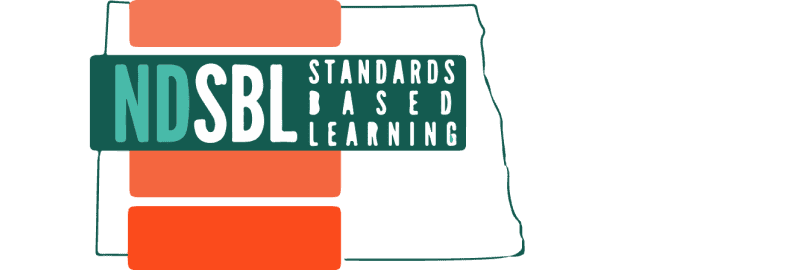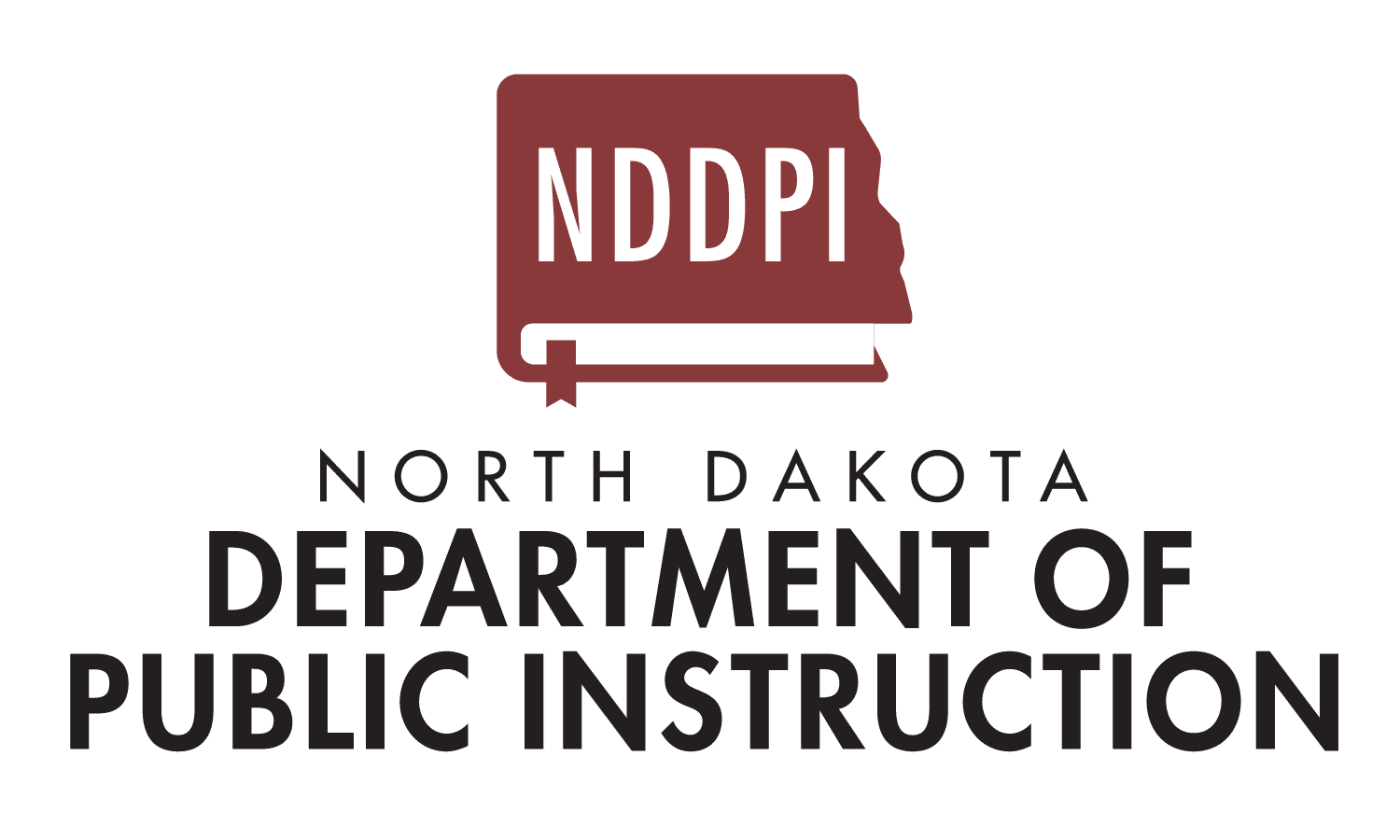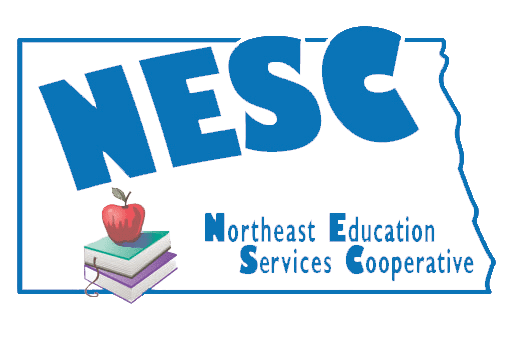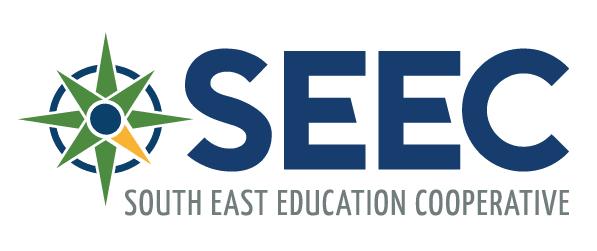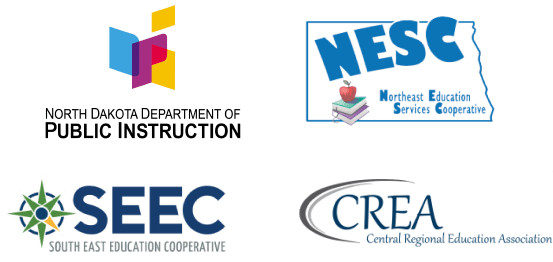Standards-based learning is a systematic approach to the planning and implementation of high-quality curriculum, instruction, and assessment. These practices meet the needs of students, educators, and families by promoting greater levels of clarity, communication, consistency, and effectiveness in teaching and learning. Using prioritized North Dakota content standards, learning time is maximized while learning progress is measured through the scaffolded demonstration of competency throughout the learning process. Standards-based learning is rooted in instructional research and serves to create a guaranteed and viable curriculum for all North Dakota students.
ABOUT NDSBL
WHAT IS STANDARDS-BASED LEARNING?

GRANT WORK
Beginning in 2017, the Central Regional Education Association (CREA – Bismarck/Minot), Northeast Education Services Cooperative (NESC – Devils Lake), and South East Education Cooperative (SEEC – Fargo) partnered to support schools in their implementation of standards-based learning.
Collaborative work among these Regional Education Associations (REAs) and with educators across the state produced the North Dakota Priority Standards, proficiency scales, and additional resources, all supported by the North Dakota Department of Public Instruction (NDDPI).
This collection of documents, aligned to the North Dakota State Content Standards, serves as a guide for schools as they refine their curriculum, instruction, and assessment frameworks and practices.
In the Spring of 2021, the CREA, NESC, and SEEC submitted a proposal to the NDDPI for continued funding of this statewide effort. The proposal was awarded in Fall 2021 for a three-year term.
Priorities within this proposal include
- Revising the existing K-12 English Language Arts and Math proficiency scales;
- Establishing K-12 Social Studies and Science Priority Standards and aligned proficiency scales; and
- Creating a statewide professional development framework.
Our team’s state scaling objectives are as follows:
- Increase equity for North Dakota K-12 students through access to teaching and learning of the State Content Standards;
- Accelerate learning for North Dakota K-12 students through implementation of quality instructional frameworks aligned with the State Content Standards;
- Increase equity for North Dakota K-12 educators and educational stakeholders through flexible access to comprehensive, scaffolded, and instructionally-focused professional development;
- Set students up for success through support of K-12 educators, schools, and school districts through the implementation of
- Evidence-based instructional frameworks; and
- Sustainable, high-quality professional development structures with entry points for schools of all sizes, locations, and readiness.
Our NDSBL team is ready to learn and work with you!
FREQUENTLY ASKED QUESTIONS
What is Standards-Based Learning?
Standards-based learning is a systematic approach to the planning and implementation of high-quality curriculum, instruction, and assessment. These practices meet the needs of students, educators, and families by promoting greater levels of clarity, communication, consistency, and effectiveness in teaching and learning. Using prioritized North Dakota content standards, learning time is maximized while learning progress is measured through the scaffolded demonstration of competency throughout the learning process. Standards-based learning is rooted in instructional research and serves to create a guaranteed and viable curriculum for all North Dakota students
What are standards?
Standards are concise, written descriptions of what students are expected to know and be able to do at a specific stage of their education. The North Dakota Department of Public Instruction posts adopted standards at the following site: K-12 Education Content Standards | North Dakota Department of Public Instruction. (synonyms include: proficiencies, state standards)
What are prioritized standards?
Prioritized standards are content standards that educators deem worthy of increased levels of instructional focus and time including possibly, reteaching, reassessment, and enrichment.
Do all the standards still get taught?
Yes, it is the recommendation that all standards within a grade level or course are still taught. Prioritized standards are taught to mastery or proficiency. In addition, supporting (non-prioritized) standards are taught and/or reviewed directly within context of the priority standards. However, supporting standards do not receive the same degree of focus within instruction or assessment.
What is a proficiency scale?
A proficiency scale is a learning progression used by teachers and students to determine the student’s current level of learning progress toward mastering the knowledge and skills noted for a standard. Proficiency scales indicate student achievement using a four-point system where a score of 3.0 indicates proficiency within a standard. In other words, a student receiving a score of 3.0 has met the standard. Students may also be scored using half-point increments such as 1.5, 2.5, and 3.5. By scoring using .5 increments, students can see a greater progression of growth throughout the standards and can celebrate success of partial mastery.
Example shell of a scale:
| 4.0 | In addition to meeting the standard, the student demonstrates applications that go beyond what was taught in class. The score of 4 is reserved for occasions where the student has gone above and beyond to demonstrate mastery of the skill. |
| 3.5 | In addition to score 3.0 performance, in-depth inferences and applications with partial success. |
| 3.0 | The student has demonstrated proficiency in the skill or standard. The student has met the standard. |
| 2.5 | No major errors or omissions regarding 2.0 content and partial knowledge of the 3.0 content. |
| 2.0 | The student has gained an understanding of the vocabulary and simpler processes of the standard. |
| 1.5 | Partial knowledge of the 2.0 content, but major errors or omissions regarding the 3.0 content. |
| 1.0 | With help, the student can achieve partial success with the vocabulary and the simpler processes involved in the standard. |
How are proficiency scales used?
Proficiency scales drive instructional decision making in all three major phases of the teaching cycle: planning, performance, and reflection. Proficiency scales serve three primary objectives. They provide clear guidance for teaching the most important content and support educators as they plan instruction. Proficiency scales serve as the framework for high-quality classroom assessment allowing educators to monitor student progress. They also clarify the communication of learning for educators, students, and stakeholders.
Why adopt standard-based learning practices?
The rationale for the school’s adoption of standards-based learning practices is simple: if we give students and families better, more specific information both before and after instruction, then better learning takes place.
NEWSLETTER
Our North Dakota Standards-Based Learning Team has established a newsletter series to support you in this important work! This work is implemented neither easily nor swiftly, and we find that it’s led best in mutual company. Let us help you through the sharing of ideas and resources, trials and successes, partners, and opportunities. We’re working on this WITH you and cheering you on all the way!

